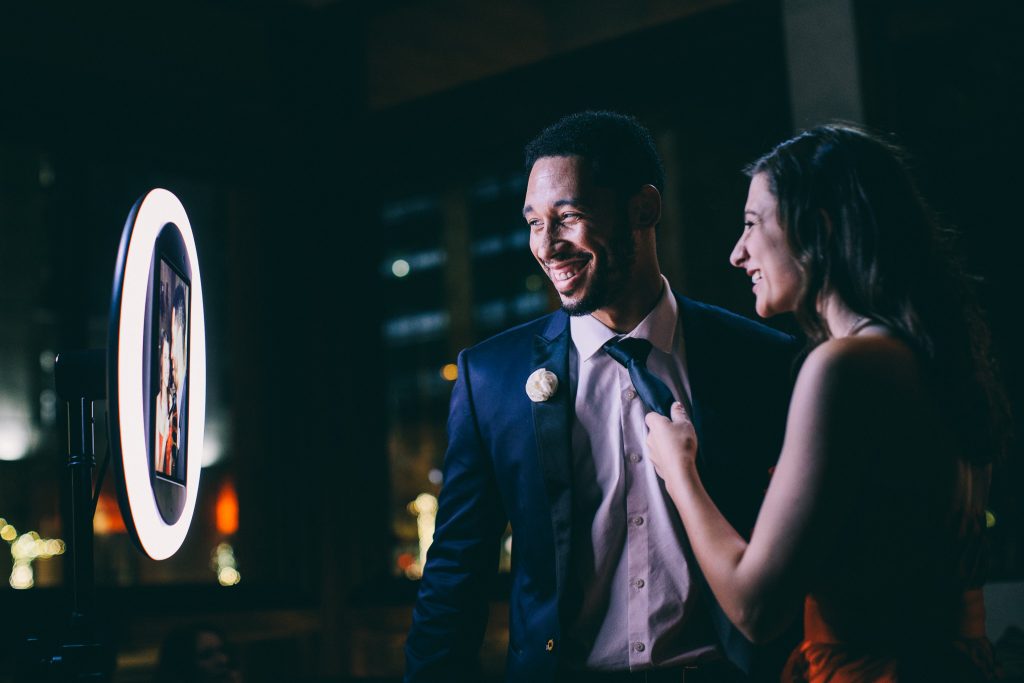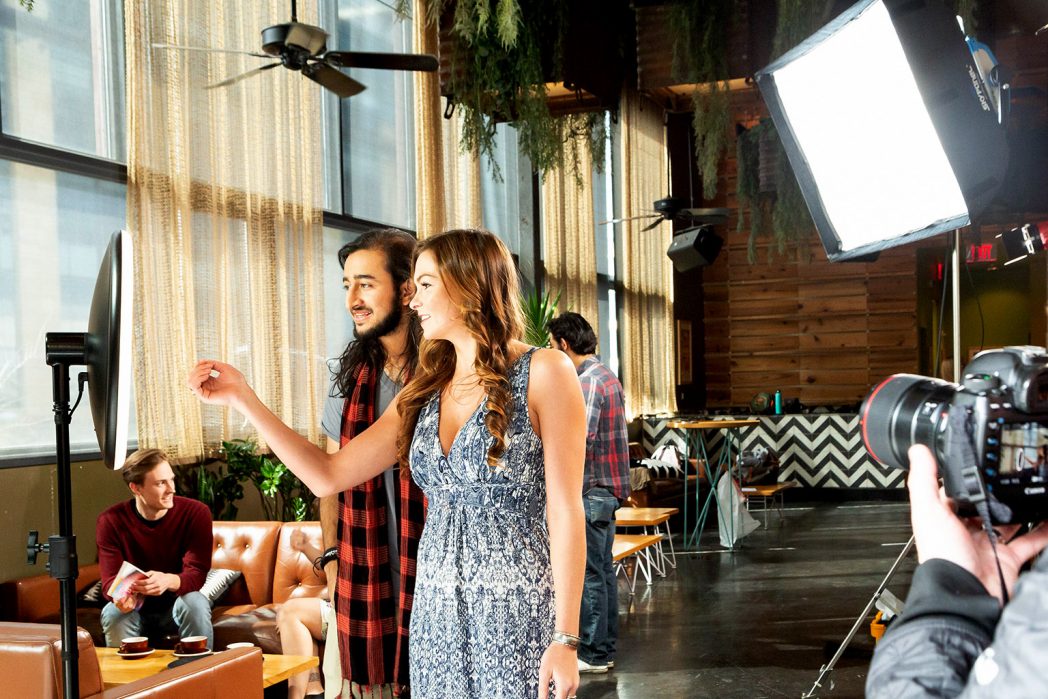As more people start their own photography businesses, one way to stand out from the crowd is to become a master of lighting!
After all, photography is the capture of light. What better way to grow as an artist and level up your photography business than to improve your understanding of light?
Here are 6 beginner lighting tips that will illuminate the way for you to better photos.
1. Practice evaluating your environment
Take a look around you, wherever you are at the moment.
You’re part of a scene.
How would you describe the lighting? What kinds of lights are around you?
This isn’t the type of thing a person would normally stop and think about when walking into a room, but if you’re a photographer, you have to learn this essential skill.
Here are some questions you might ask yourself:
- Does the room you’re in have fluorescent lights or incandescent?
- Are the tones warm or cool?
- Are the lights at single points or diffused by soft panels?
Now, not all light sources are created equal. They each have unique attributes like brightness, softness and temperature. Different light sources can work together–or they can work against each other.
Natural daylight is generally considered the best light source because it has a broad spectrum, or in technical terms, a high color rendering index (CRI).
The sun has a CRI of 100, which is the maximum value for CRI, so it sets the standard for all other light sources. A CRI over 90 is generally considered good.
If you’re shooting indoors, large windows can be a great asset, but if a beam of direct sunlight falls directly on your subject then you may need to try to find another spot in the room to shoot. The goal in this scenario is to have the sunlight to bounce and fill the room without directly landing on your subject.
Wherever you are, the first step to becoming a master at lighting is to look around you and see what you have to work with.
2. Keep a close eye on color temperatures
“One of the biggest challenges when lighting on location for video or stills is all the different color temperatures.”
If you’ve ever bought a pack of light bulbs, you’ve dealt with color temperatures. Soft white, bright white or cool white—they all have a completely different look that can throw you off if you try to mix and match. If you read the fine print on these bulbs, you can discover what their actual estimated color temperature value is, measured in units of kelvin.
As a photographer, you’ll need to get used to thinking in terms of kelvin values.
It’s important to set your camera’s white balance correctly for your environment, but this becomes next to impossible in mixing lighting, where multiple light sources have very different kelvin values. This is because your camera can only match one of the temperature values to true white. Other kelvin values in the mix will either look too warm or cool and can throw off your shot.
The key is to always try to match up the light color temperatures in your scene, especially when they are not just background elements but actually cast significant light onto your subject.
2. Start with the key light
The “key” light is your dominant light source.
“You need to be able to control your light sources to ensure your subject won’t have any distracting shadows or colors on their face.”
If you’re shooting outside during the day, the key light source will typically be the sun. It’s challenging and unadvisable to try to overpower the sun with light sources. One exception is during “golden hour,” the moments during sunset when the sun is at its furthest angle. During this time, the sun is less intense and casts a beautiful warm hue on subjects.
In most cases, controlling the sun as a photographer simply means diffusing it over your subject with a “scrim” or blocking completely with a heavy black piece of fabric called a “flag.”

If it’s a cloudy day, you’re in luck for your portrait session because the sun is already diffused. You won’t get a big blue sky in the background—but it’s always more important that your subject is well-lit. Another approach if you are on the go in broad daylight is to take cover in the shade and if possible, add some light to your subjects’ faces. The drawback to shooting in the shade is that if your background is in broad daylight, it is easy to get blown out images where parts are overexposed and detail is lost.
Indoors, controlling the light typically means you need to be able to light the scene with your own light, which gives you far more control. Your primary light will be your key light.
If you add an additional light, this is called your “fill” light. It is typically not as bright as your key light, depending on how you want to handle shadows—which we’ll talk about in the next section.
4. Use shadows to create contrast in your images
In general, the more light the better.
However, contrast is how photographers impart depth and interest into their images. You can’t have an image with beautiful contrast unless the image includes sections that are brighter and parts that are darker.
Take a moment while you’re composing your image to think about what you want to be dark in your photos, in addition to what you want to be illuminated. Visualize it and then position your subjects or your lights to create contrast. In time, this will become second nature.

Considering darkness as part of your process will give your images a more dynamic look that results in a more engaging photographic result.
As an added bonus, it’s also often cheaper and easier to remove light than to add light. You may also find that by turning off lights that aren’t specifically part of your setup, you can reduce color casts created by mixed lighting.
5. Create space between your light and the camera
Have you encountered bright spots on your subjects’ foreheads from flashes? Bright spots in their eyes? That might be because the light you’re using is too close to the lens. The beam of light is bouncing back too directly into the camera from the source, causing a harsh reflection.
Videographers or photographers should avoid relying solely on a camera-mounted flash pointed directly at the subject because of this unpleasing effect. Often, a camera mounted flash performs better if you can bounce it off the ceiling or wall instead.
For portrait photography, an ideal setup is to have a key light on one side of the camera and a fill light on the other, situated at least several feet away. This will diffuse the light and prevent those nasty bounce-back effects.
If you can’t do a lighting set up like this, a ring light that goes completely around the camera is a good bet for soft portrait looks. This type of light prevents any single “hot spot” from appearing on the subject’s face and fills in shadows nicely, making wrinkles and imperfections less noticeable.
6. Get a light kit to start practicing
You’re not going to grow as a photographer until you have a few lights to experiment with!
Fortunately, with the advent of LED technology, there are tons of options for bright and portable lighting setups to choose from.
In our DIY photo booth guide, we walk through a variety of lighting setups for indoor portrait situations with links to specific gear. These setups include LED two-light panel kits, tube lights, and ring lights. We recommend this article for continued reading and finding some gear to help you grow.
A final tip for beginners
Lighting is a little more complicated than most people expect because we so often take it for-granted in our daily lives. It takes a lot of time and practice to become great at lighting.
If you can, seek out an experienced Director of Photography (DP) or lighting expert to learn from and assist on their projects. You will discover so much about the equipment they use and how they handle different situations.
Having a mentor and getting hands-on experience is by far the fastest way to get better at lighting!
At Simple Booth, we’re passionate about great lighting and great experiences. If you’d like to add a professional photo booth to your business, check out our turn-key solution called Simple Booth HALO®.
